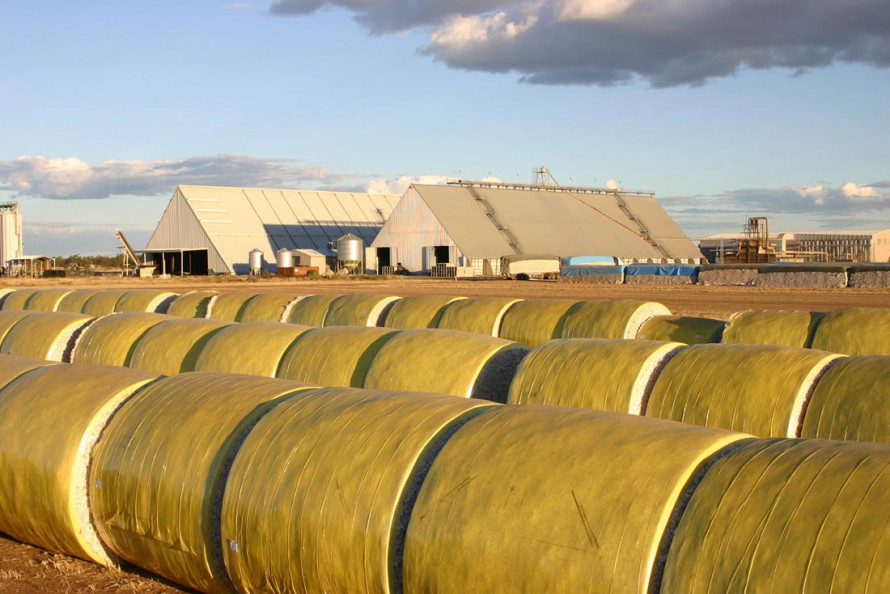Drought-weakened Namoi Cotton has re-jigged its marketing joint venture with multinational commodities giant Louis Dreyfus Company, effectively giving its partner control of day-to-day management of Namoi's trading and marketing and warehousing activities.
In what is expected to be the last in a six-month run of sweeping restructuring and staff shedding actions at the NSW-Queensland ginning and marketing company, the latest Namoi business shakeup aims to bolster the trading business's financial capacity to weather volatile cotton and currency markets.
The Netherlands headquartered Louis Dreyfus, which also has three Australian gins and warehouses of its own, has been a marketing partner and major shareholder in Namoi since 2013 when the two formed the Namoi Cotton Alliance.
Although the NCA partnership remains 51 per cent owned by the 58-year-old Namoi, the former farmer-owned co-operative will scale back its contribution to NCA's marketing activities, primarily focusing on selling and handling cottonseed and containerised grain packing.
The changes cut the parent ginning company's business involvement in the trading and marketing venture to just 15pc while lifting Dreyfus' commitment to 85pc, including arranging debt finance to fund NCA's operations.
Louis Dreyfus Company's regional head of South and South East Asia Thomas Couteaudier said by leveraging LDC's global trading and research skills and Namoi Cotton's strong processing and marketing track record, NCA's restructure would "bring greater value to growers and customers alike".
Namoi, which shed about 40pc of its payroll in a cost cutting purge in November, and last month reported an $11 million loss for 2019-20, will continue focusing on cotton ginning, sourcing lint for processing and grower services for its farmer customers, plus NCA's grain and cottonseed packing division.
"Namoi Cotton's board has long recognised it needed to get back to its core business," said chief executive officer, Michael Renehan.
The restructure was not a takeover of the partnership or the respected Namoi brand, but it would fortify the trading business' balance sheet.
"Trading is a tight margin game and it needs a very big balance sheet behind it to accommodate sale defaults, currency movements and more," he said.
"It's basically beyond our fiscal capability to do the job properly."
For the past three years unexpected trading costs and significant market movements meant Namoi had to write off big sums carried across to its own financial results.
"This new agreement puts the functional operations of the NCA business in the hands of the joint venture partner best suited to the task and better aligning our business exposure with our risk appetite," Mr Renehan said.
"Importantly for the local industry, it also allows customers to pursue opportunities with NCA, confident that business has the full support of two major players in the Australian and global cotton markets."
No immediate changes were planned to NCA's marketing team, based in Toowoomba, although the Louis Dreyfus cotton business was expected to combine with various NCA's operations including sharing Namoi warehouse facilities at Wee Waa and Goondiwindi.
He said the strong trading connections offered by Louis Dreyfus would also help Namoi keep grower customers better informed about the market and marketing options, in turn drawing more cotton through the company's gins.
Assuming the deal received competition regulatory approvals, NCA would not change its full suite of products and services across its lint marketing, warehousing and logistics, and containerised commodity grains packing divisions.
While Namoi had no immediate plans to expand cottonseed trading and grain packing operations, Mr Renehan said there were "real opportunities to explore" for that part of the business.
He said the past six months of change had been significant for the company and its customers, but there was also an expectation a new management agenda would have to "deal with legacy issues and de-risk the business".
"What customers wanted 10 years ago is not what they need today," he said.
"We're making quite a few engineering and technical changes to the way we run our business and provide grower services - internally we're calling it modernisation of Namoi."
Source: farmweekly.com.au

